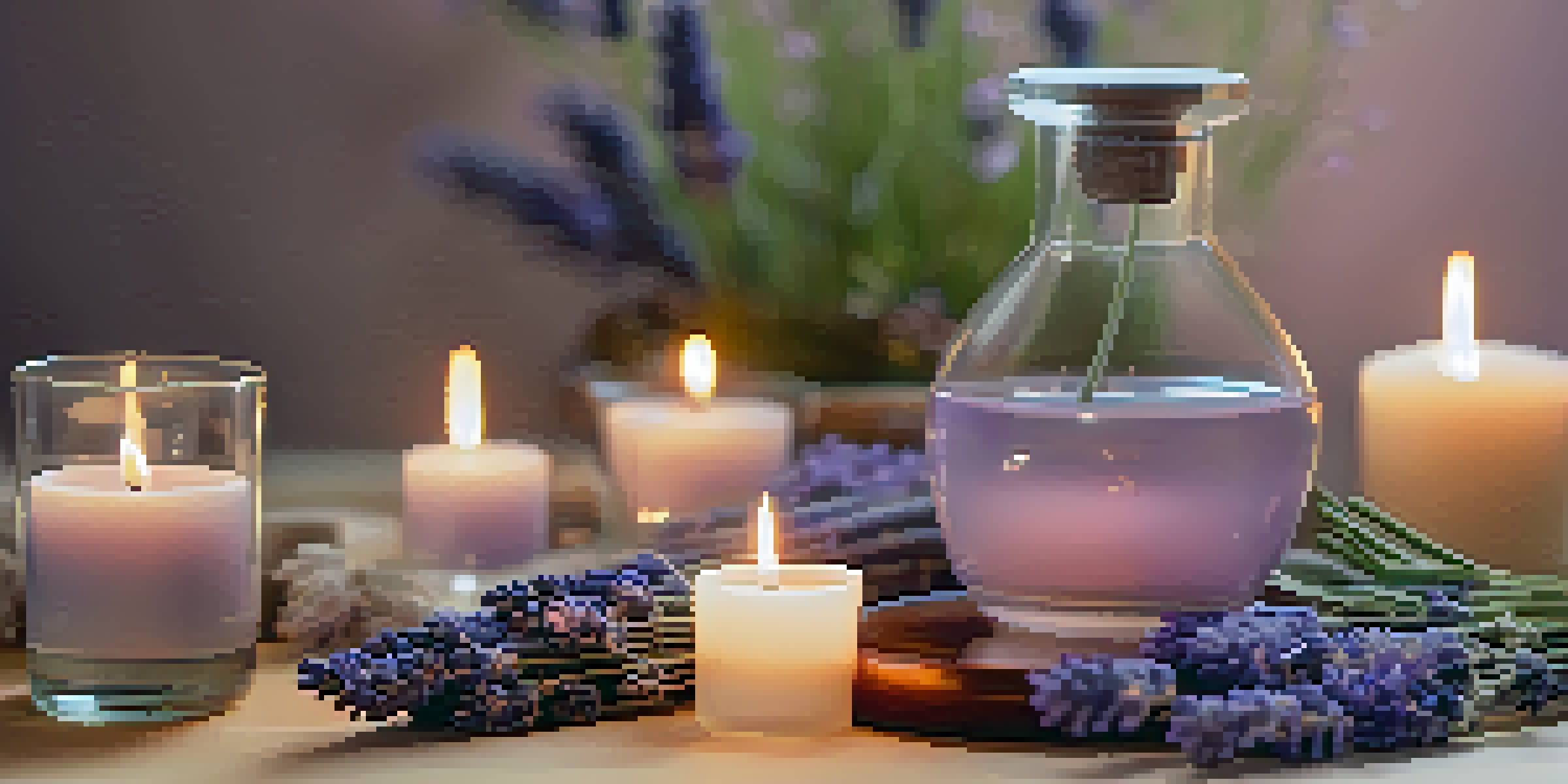Essential Oils in Naturopathy: Safe Use and Benefits

Understanding Essential Oils and Their Origins
Essential oils are concentrated extracts derived from plants, capturing their aromatic compounds. These oils have been used for centuries in various cultures for their therapeutic properties. In naturopathy, essential oils play a significant role due to their natural healing abilities.
Essential oils are the most powerful tools we have for healing ourselves and others.
The process of extracting essential oils can vary, but common methods include steam distillation and cold pressing. Each oil carries unique characteristics and benefits, often linked to the plant's environment and cultivation. This rich history underscores their significance in holistic health practices.
As we explore essential oils, it's crucial to acknowledge their potential impacts on the body and mind. Their aromatic qualities can evoke emotions and memories, making them a powerful tool in both physical and emotional healing. Understanding these origins helps appreciate their role in naturopathy.
The Benefits of Essential Oils in Naturopathy
Essential oils offer a range of benefits that support various aspects of health, from physical ailments to emotional well-being. For example, lavender oil is renowned for its calming effects, helping to reduce stress and promote relaxation. Likewise, peppermint oil may aid digestion and alleviate headaches.

Naturopathy emphasizes treating the whole person, and essential oils align perfectly with this philosophy. They can be used in aromatherapy, massage, or even topical applications, allowing for versatile integration into personal care routines. This adaptability makes them valuable in holistic healing.
Essential Oils and Their Benefits
Essential oils are powerful plant extracts that promote physical and emotional healing through various applications in naturopathy.
Moreover, research continues to uncover new therapeutic properties of essential oils, such as anti-inflammatory and antibacterial effects. This growing body of evidence highlights their potential to complement conventional treatments, offering a natural alternative for wellness.
Safe Use of Essential Oils: Guidelines to Follow
While essential oils are beneficial, it's essential to use them safely to avoid adverse reactions. A general rule is to dilute oils with a carrier oil, such as coconut or jojoba oil, before applying them to the skin. This practice helps minimize irritation and ensures a more pleasant experience.
Nature itself is the best physician.
Additionally, some oils can be harmful if ingested or used inappropriately. For instance, oils like cinnamon and clove can cause skin burns if applied undiluted. Always research individual oils and seek guidance from a qualified practitioner to ensure safe usage.
Pregnant women, young children, and individuals with specific health conditions should exercise extra caution. Consulting with a naturopathic doctor can provide personalized recommendations and safe practices for incorporating essential oils into your wellness routine.
Popular Essential Oils and Their Uses in Naturopathy
Certain essential oils have gained popularity for their wide-ranging applications in naturopathy. Tea tree oil, for example, is celebrated for its antibacterial properties and is often used to treat minor cuts and skin irritations. Its versatility makes it a staple in many natural medicine cabinets.
Another favorite is eucalyptus oil, known for its refreshing scent and respiratory benefits. It can help clear congestion and is often used in steam inhalation. This oil not only promotes physical relief but also invigorates the senses, enhancing overall well-being.
Safe Practices for Using Oils
To avoid adverse reactions, essential oils should be diluted with carrier oils and used cautiously, especially for vulnerable populations.
Lastly, chamomile oil is revered for its calming effects, making it an excellent choice for promoting sleep and relaxation. By understanding these oils and their specific uses, individuals can tailor their naturopathic approaches to meet their unique health needs.
Methods of Application: How to Use Essential Oils Safely
There are several effective methods for applying essential oils, each suited to different preferences and needs. Aromatherapy diffusers are popular for dispersing oils into the air, creating an inviting atmosphere while delivering therapeutic benefits. This method is excellent for enhancing mood and promoting relaxation throughout your space.
Topical application is another common method, allowing for direct benefits to specific areas of the body. As mentioned earlier, always dilute essential oils with a carrier oil to reduce the risk of skin irritation. This approach can be particularly effective for addressing localized issues, such as muscle tension or skin conditions.
Inhalation is a simple yet powerful way to use essential oils, especially for respiratory benefits. Placing a few drops on a tissue or cotton ball and inhaling deeply can provide immediate relief from congestion or stress. By exploring these methods, individuals can find what works best for their personal wellness journey.
Combining Essential Oils with Naturopathic Practices
Essential oils can enhance various naturopathic practices, creating a more holistic approach to health. For example, during a massage, incorporating essential oils can elevate the experience, promoting deeper relaxation and muscle relief. This synergy between touch and scent creates a powerful healing environment.
In herbal medicine, essential oils can complement tinctures and teas, offering a multi-faceted approach to wellness. For instance, adding a drop of ginger essential oil to a herbal tea can enhance digestive support while providing a pleasant flavor. This combination can be particularly beneficial for individuals seeking natural remedies.
Integrating Oils into Wellness Routines
Combining essential oils with naturopathic practices like massage, herbal medicine, and mindfulness enhances overall health outcomes.
Moreover, essential oils can be integrated into mindfulness practices like meditation and yoga. The calming scents can help create a peaceful atmosphere, aiding in focus and relaxation. By weaving essential oils into these practices, individuals can amplify their benefits and deepen their holistic health journey.
Conclusion: Embracing Essential Oils for Holistic Health
In conclusion, essential oils are a valuable component of naturopathy, offering numerous benefits for both physical and emotional well-being. By understanding their origins, uses, and safe practices, individuals can harness their power effectively. The versatility of essential oils allows for personalized approaches to health that resonate with individual needs.
As you explore the world of essential oils, remember that safety and education are paramount. Consulting with healthcare professionals can provide insights and recommendations tailored to your unique circumstances. This support can help you navigate the vast array of options available.

Ultimately, embracing essential oils as part of your holistic health journey can lead to enhanced well-being and a deeper connection to your body. With mindful use and respect for their potency, essential oils can be a transformative addition to your naturopathic practices.